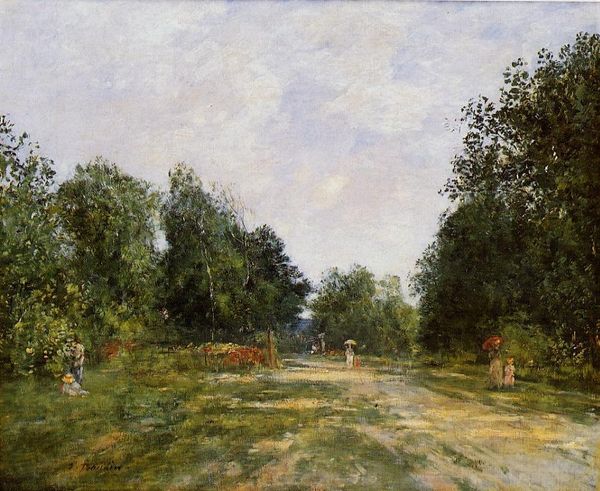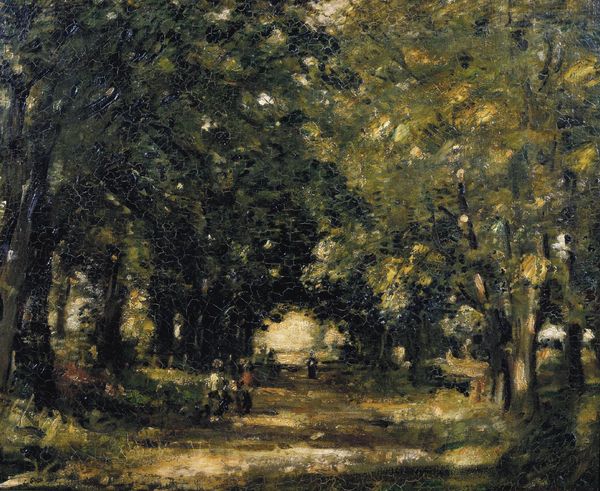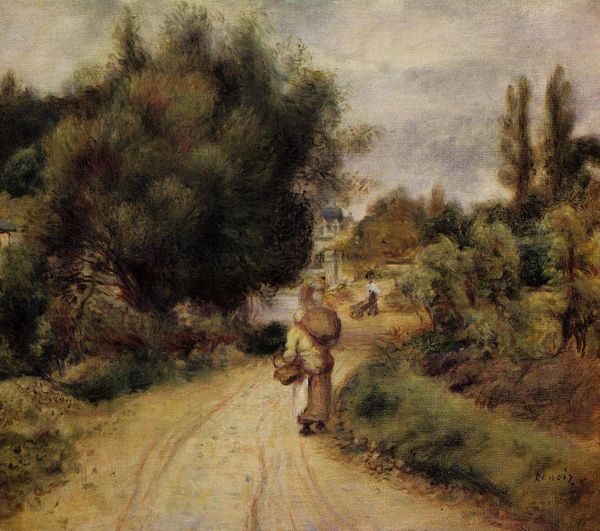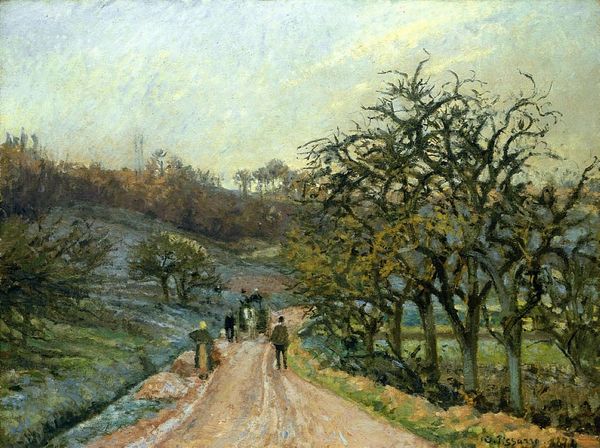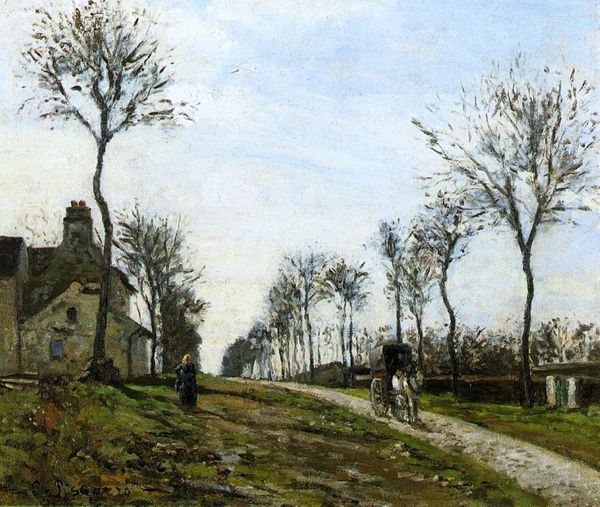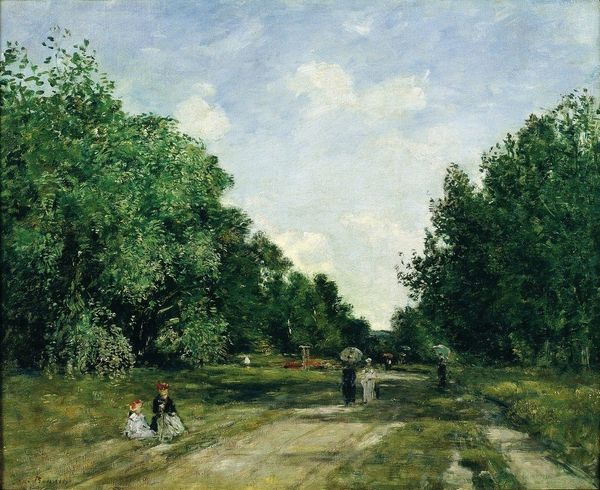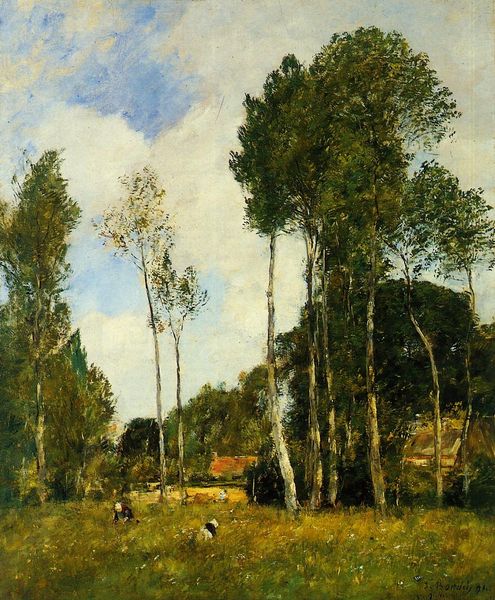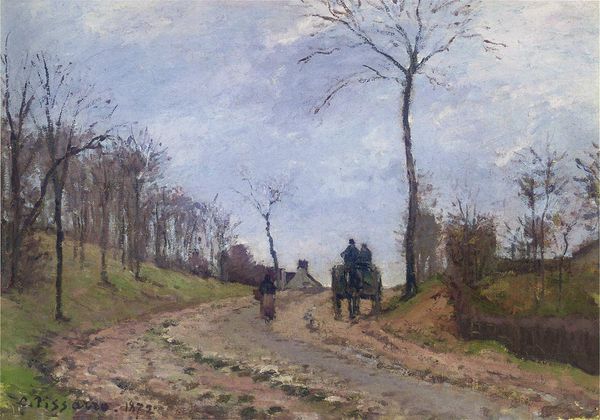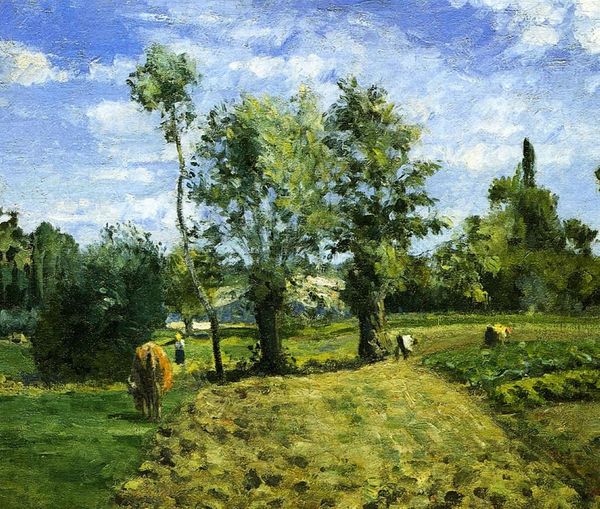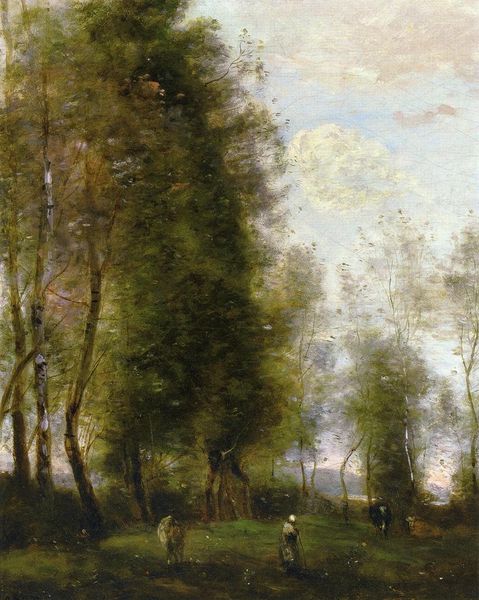
Copyright: Public domain
Curator: Let’s take a moment to discuss Eugène Boudin’s "Trouville, Le Chemin de la Corderie," created in 1878. Editor: It evokes a wistful melancholy, wouldn’t you agree? The subdued palette creates a subdued atmosphere. There is something both beautiful and forlorn in the muted hues. Curator: Indeed. Boudin painted this en plein air, a practice gaining momentum among Impressionists. He sought to capture the fleeting effects of light and atmosphere on the Normandy coast. Consider the social context: Trouville was transforming from a quiet fishing village into a bustling resort, accessible to Parisians thanks to the expansion of the railways. Editor: Note how the composition pulls your eye. The road serves as a diagonal leading into depth, bracketed by dense foliage. Light dapples through, fracturing the path, and creating soft-edged shapes rather than sharp definition. Boudin prioritizes optical sensations and rendering ambient light, rather than precise descriptive details. Curator: Boudin's decision to include working-class figures, like the peasants, alongside those who probably came to Trouville on vacation humanizes the image, representing everyone together along the road. This intersection reflects Boudin's commitment to depicting a complete, complex social scene. Editor: Yes, you are quite correct. Notice how his brushstrokes convey texture but never overwhelm. Each passage reveals his dexterity, such as how the loose applications conjure atmospheric depth without rendering objects heavy-handedly. He maintains delicate equilibrium, balancing objective record with emotive interpretation. Curator: By engaging with social mobility and transformation through painting, Boudin invites us to reconsider our understanding of art’s role in both shaping and reflecting collective experiences. His legacy rests not just on aesthetics, but also social insight. Editor: Seeing this painting reminds me of the capacity of art to be much more than descriptive likeness. Instead, he suggests ways visual forms translate emotional realities—Boudin masterfully demonstrates this ability with each careful placement. Curator: Your insightful readings into the artwork's formal and historical elements give rise to deeper insights! Editor: Thanks! Examining his brushwork with the historical background adds profound dimensions, indeed.
Comments
No comments
Be the first to comment and join the conversation on the ultimate creative platform.
